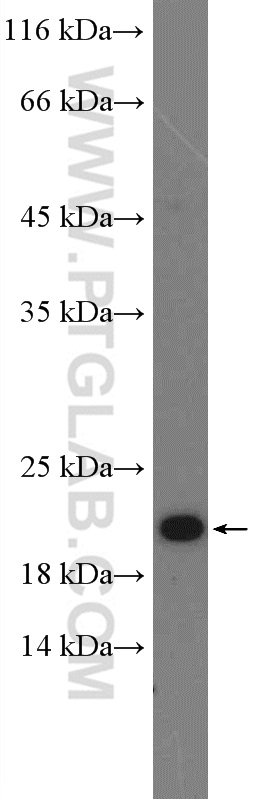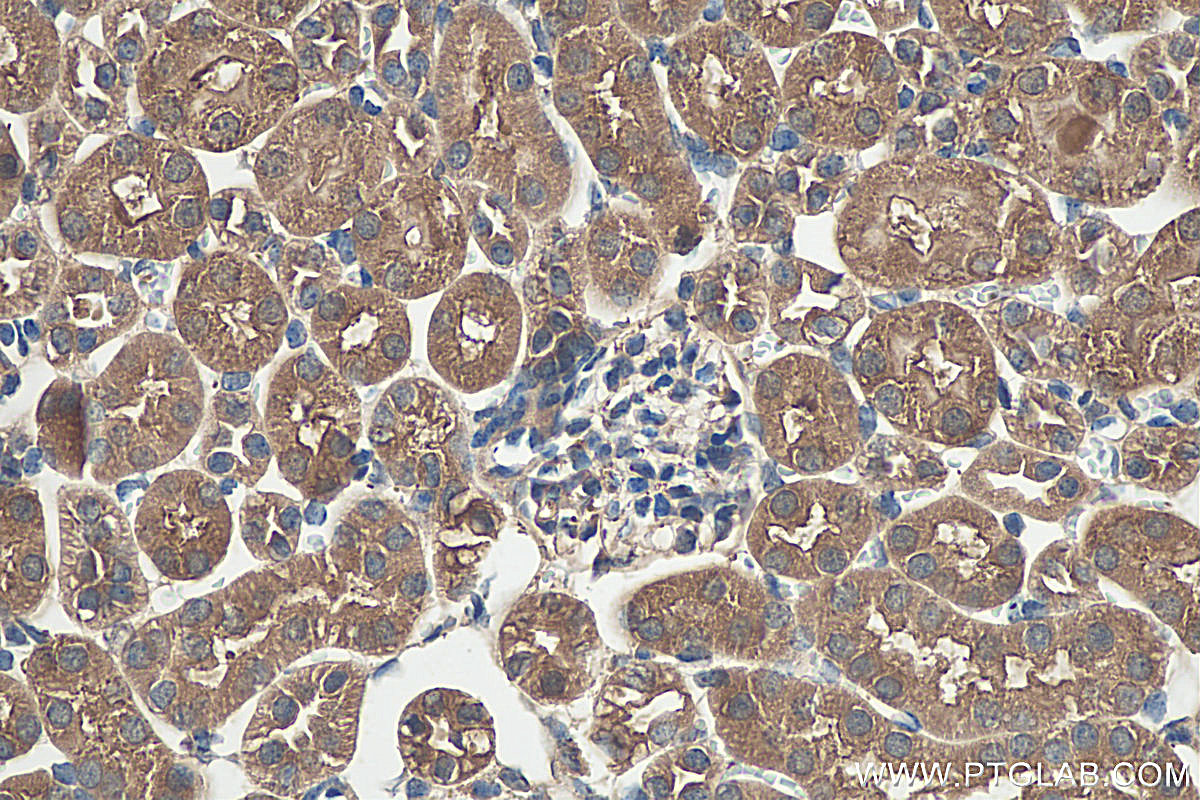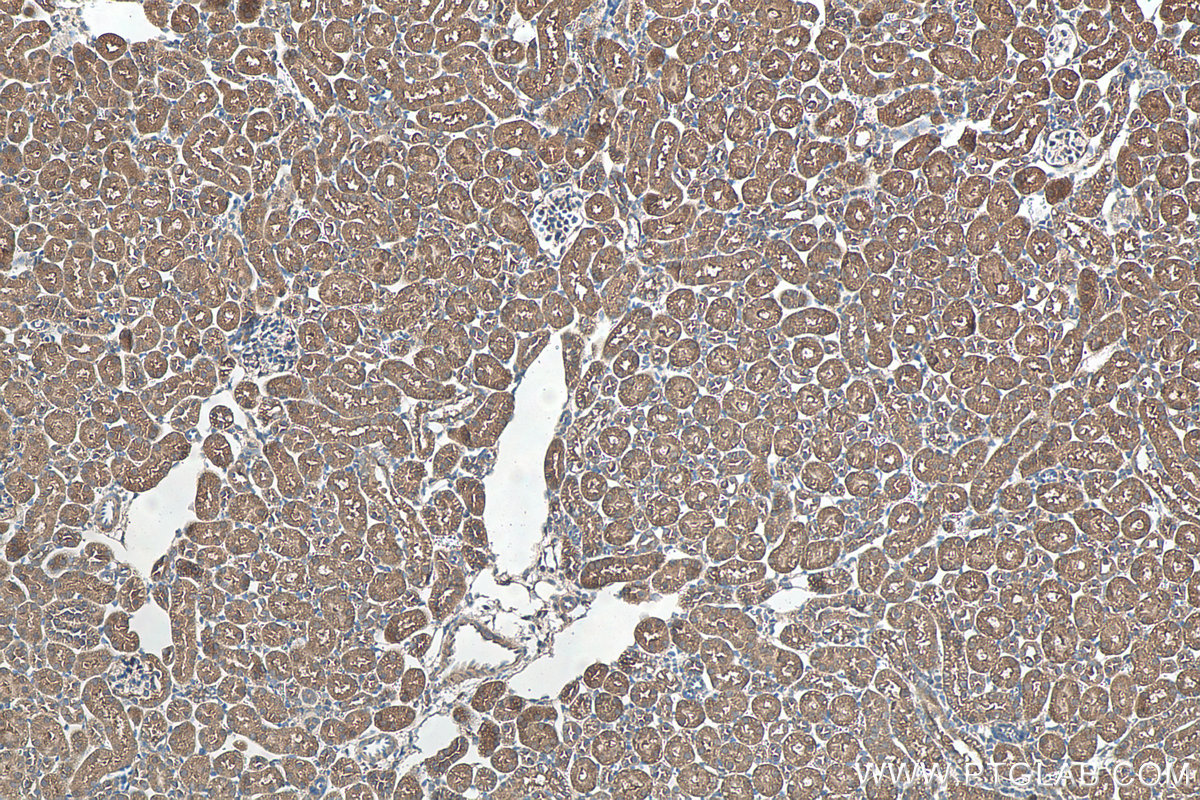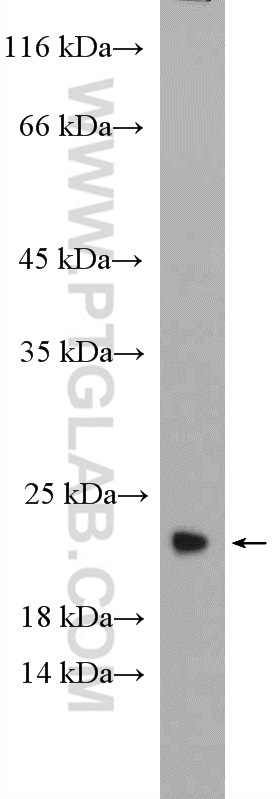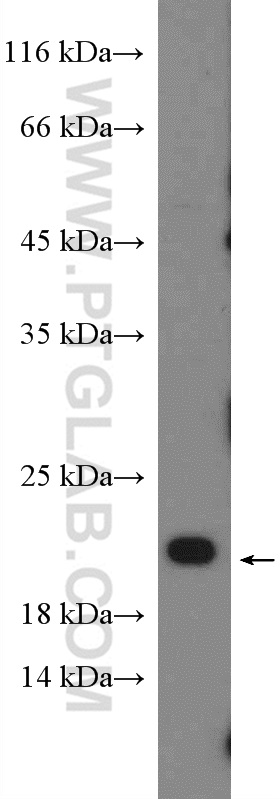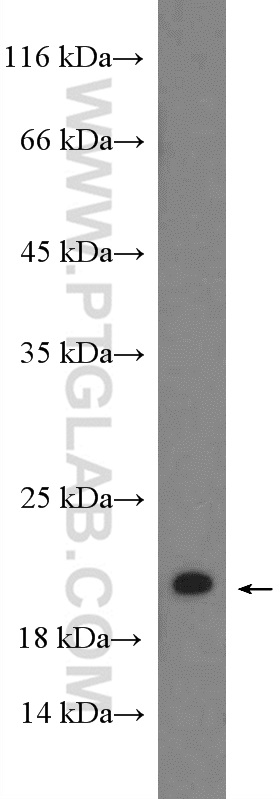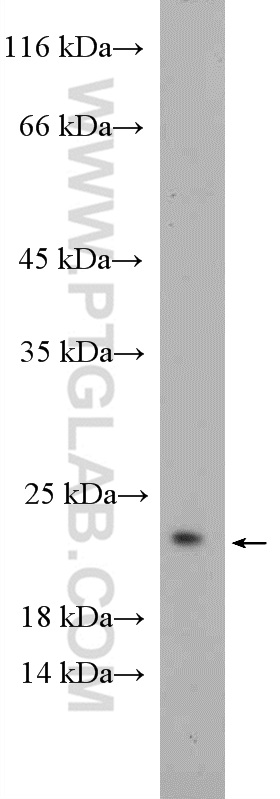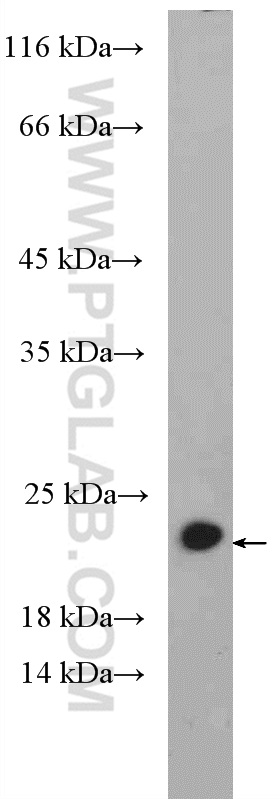验证数据展示
经过测试的应用
| Positive WB detected in | MDA-MB-453s cells, C6 cells, HeLa cells, MCF-7 cells, Neuro-2a cells, NIH/3T3 cells |
| Positive IHC detected in | mouse kidney tissue Note: suggested antigen retrieval with TE buffer pH 9.0; (*) Alternatively, antigen retrieval may be performed with citrate buffer pH 6.0 |
推荐稀释比
| 应用 | 推荐稀释比 |
|---|---|
| Western Blot (WB) | WB : 1:500-1:2000 |
| Immunohistochemistry (IHC) | IHC : 1:50-1:500 |
| It is recommended that this reagent should be titrated in each testing system to obtain optimal results. | |
| Sample-dependent, Check data in validation data gallery. | |
产品信息
19671-1-AP targets RHOG-Specific in WB, IHC, ELISA applications and shows reactivity with human, mouse, rat samples.
| 经测试应用 | WB, IHC, ELISA Application Description |
| 经测试反应性 | human, mouse, rat |
| 免疫原 |
Peptide 种属同源性预测 |
| 宿主/亚型 | Rabbit / IgG |
| 抗体类别 | Polyclonal |
| 产品类型 | Antibody |
| 全称 | ras homolog gene family, member G (rho G) |
| 别名 | RHOG, ARHG, Rho-related GTP-binding protein RhoG |
| 计算分子量 | 21 kDa |
| 观测分子量 | 21 kDa |
| GenBank蛋白编号 | NM_001665 |
| 基因名称 | RHOG |
| Gene ID (NCBI) | 391 |
| RRID | AB_2878593 |
| 偶联类型 | Unconjugated |
| 形式 | Liquid |
| 纯化方式 | Antigen affinity purification |
| UNIPROT ID | P84095 |
| 储存缓冲液 | PBS with 0.02% sodium azide and 50% glycerol, pH 7.3. |
| 储存条件 | Store at -20°C. Stable for one year after shipment. Aliquoting is unnecessary for -20oC storage. |
背景介绍
RHOG, also named as ARHG, belongs to the small GTPase superfamily and Rho family. It is required for the formation of membrane ruffles during macropinocytosis. And it is required for the formation of cup-like structures during trans-endothelial migration of leukocytes. In case of Salmonella enterica infection, it is activated by SopB and SGEF, which induces cytoskeleton rearrangements and promotes bacterial entry. This antibody is specific to RHOG.
实验方案
| Product Specific Protocols | |
|---|---|
| IHC protocol for RHOG-Specific antibody 19671-1-AP | Download protocol |
| WB protocol for RHOG-Specific antibody 19671-1-AP | Download protocol |
| Standard Protocols | |
|---|---|
| Click here to view our Standard Protocols |

